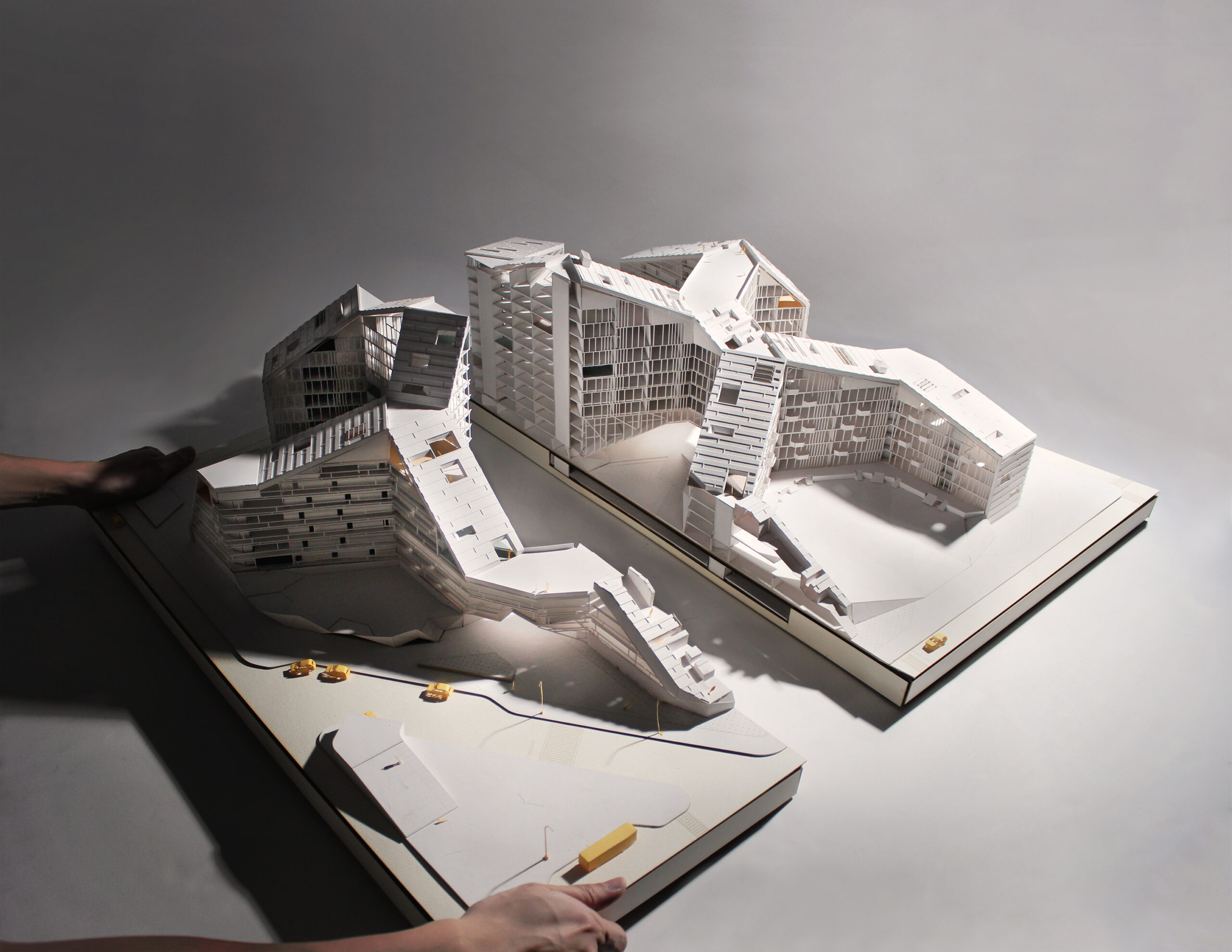BUELL CENTER PARIS PRIZE 2017
https://www.arch.columbia.edu/news/180125
MIXED ECONOMY FOR SUSTAINABLE COMMUNITY | SOUTH BRONX
The mass neighbourhood of Claremont in South Bronx composed of mainly NYCHA public housing, where poverty and social problems amass. Divorced families give rise to increasing single mothers, thus poverty. To revive the neighbourhood on social and economic aspects, the project aims to accommodate both low and mid-income families. Shared programs from large to small scales promote interactions yet allow flexibility for diverse income needs.
DEMOGRAPHICS PROGRAM DISTRIBUTION
MASSING ITERATIONS
Slab width and length variations are generated and tested to compare the relation to surrounding site programs and circulation. A 40-feet single-loaded typology is chosen to create the differentiation of courtyards surrounded by units versus that surrounded by corridors. This distincts open spaces from each other.
URBAN STRATEGY
The urban cut breaks the generic subdivision of a typical city block. It introduces the commercial strip into the internal courtyard, forming an open plaza for residents and the public. Boundaries are blurred as complimentary programs are brought into living block. The open grounds caters specific programs for the different communities. At the same time, they connects to surrounding programs e.g. schools and churches.
INTERSECT AS CORE | ORGANIZATION LOGIC
The branching system distributes units to form an entire connected network. Intersections house the circulation cores to allow efficient access. Social communal spaces including laundry rooms and community kitchens are located around cores to promote the sharing of spaces. Spontaneous social interactions become easy and frequent as one circulates around the building.
NORTH-SOUTH SECTION ACROSS COURTYARD AND HOME OFFICE APARTMENTS
EAST-WEST SECTION ACROSS ENTRANCE AND CENTRAL PLAZA UNDER TRUSSED AUDITORIUM
UNIT VARIATION | NEW TYPOLOGIES
In relation to the differential open grounds, multiple unit types are designed to better facilitate the specific needs of demographics. Nowadays, people spend as much or more time work as one rests. The new typology ‘Home Office’ is designed to allow inhabitants to bring work into their living spaces. Not only single mothers but people who can work remotely at home, will save the need of daily commute. ‘Courtyard apartments’ are inspired by traditional townhouse typology. A close proximity to the ‘front yard’ accommodates large families.
ROOFSCAPE
The roof is an architectural move that epitomizes a strong community through promoting planting practice, eating locally, reusing water and generating electricity. On top, the roof creates a self sustainable planting practice and public space for people to enjoy the view. This creates a self-sustainable culture among the community through creating new ways of working and living. By manipulating the roof as dynamic planes, the roof connects to the street and bring the public up from the ground. This forms a continuous landscape and activates the roof by bring inhabitants and the public together.
SPATIAL AND PERFORMATIVE TECTONICS
Following a coherent tectonic language, roof elements are designed to accommodate a variety of programs and performances. For instance, cutouts are made to create balcony spaces for apartment units. Louvers are designed for ventilation purposes in supporting mechanical spaces. Long cutouts are skylights that introduce additional natural light into the penthouse units. Extruded units serve as steam outlets where the city’s steam energy is utilized in sauna spaces before exhaustion.
SOCIAL & INFRASTRUCTURE | WATER SYSTEMS
The undulating roofscape provides an efficient surface for storm water collection. Storm and grey water is treated for reuse, forming a sustainable water recycle circuit. Despite infrastructural reuse, water acts as a social element in the building. Interactive social spaces that allows inhabitants to engage in the water cycle are created. Outdoor shower spaces that draws water from storage tanks. Green roof spaces that use filtered water for irrigation. The sustainable element integrates into social programs to foster a strong and interactive community.
A DAY IN MICRO-CITY
Imagining the life of a writer living in the project, from day to night. The unit is no longer a sole living space, but a binary space for work and rest. Church gatherings, cooking and public work events take place in the same block. The building transforms into a micro-city which provides plenty interactive opportunities but also private space. Community kitchens and rooftop planting encourage healthy eating habits to combat fast food culture. Social communal spaces serve to create a sustainable community.
